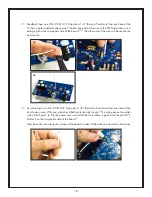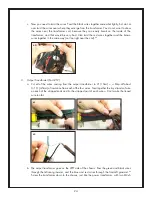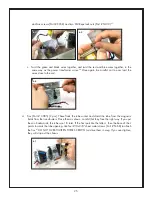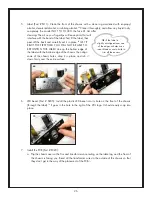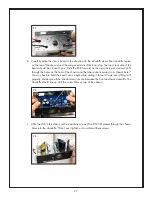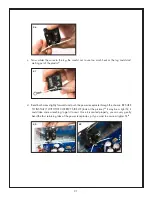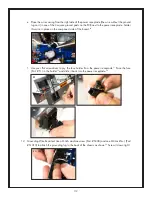
17
the board because this component is switching high voltage. The front two pins just act as anchors
for the switch and are connected to the large piece of metal on the front of the component. Extra
heat may be needed to secure these pins properly because the large piece of metal tends to act
as a heat sink.
Once you have soldered all the leads, check the rigidity of the solder joints by flipping the switch
several times. Make sure it feels secure.
10. LED (Part # D1): The LED (light emitting diode) is a polarized component, meaning that it matters
which way it goes into the holes. Following the standard of all the polarized components on this
board, the long lead goes into the square hole.
30, 31
If you do not install the LED in the correct
orientation the “on light” will not work. Install the LED in the holes so that the top of the LED stands
about 7/8” (23mm) off the surface of the board.
32
Solder the LED on the component side of the
board (it will be easier to switch later if you get it backwards).
33
Clip the leads on the solder side
of the board.
28
29
30
31
32
33
















